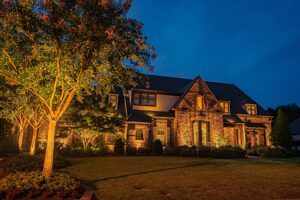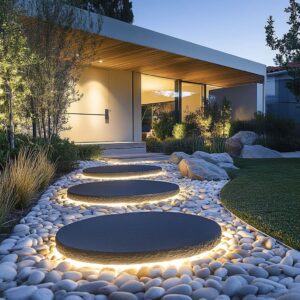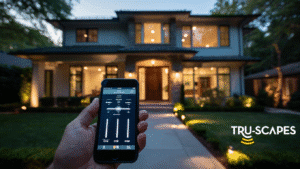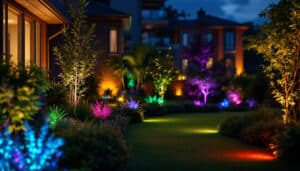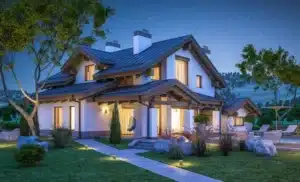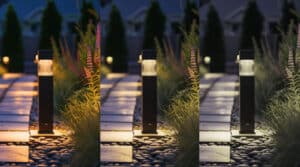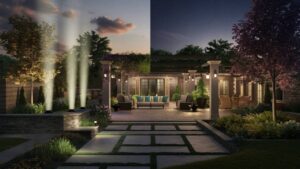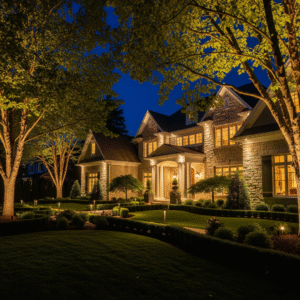Ever walked through a neighborhood at night and found yourself stopping in awe – captivated by a glowing garden or a tree that looks straight out of a fairy tale? That’s the power of beautifully designed landscape lighting. And often, floodlights are the secret behind those dramatic, eye-catching effects. In this guide, you’ll learn how to use floodlights to turn your outdoor space into a nighttime masterpiece. From selecting the right fixtures to placing them with purpose, we’ll share practical tips to boost your home’s curb appeal and create an unforgettable ambiance.
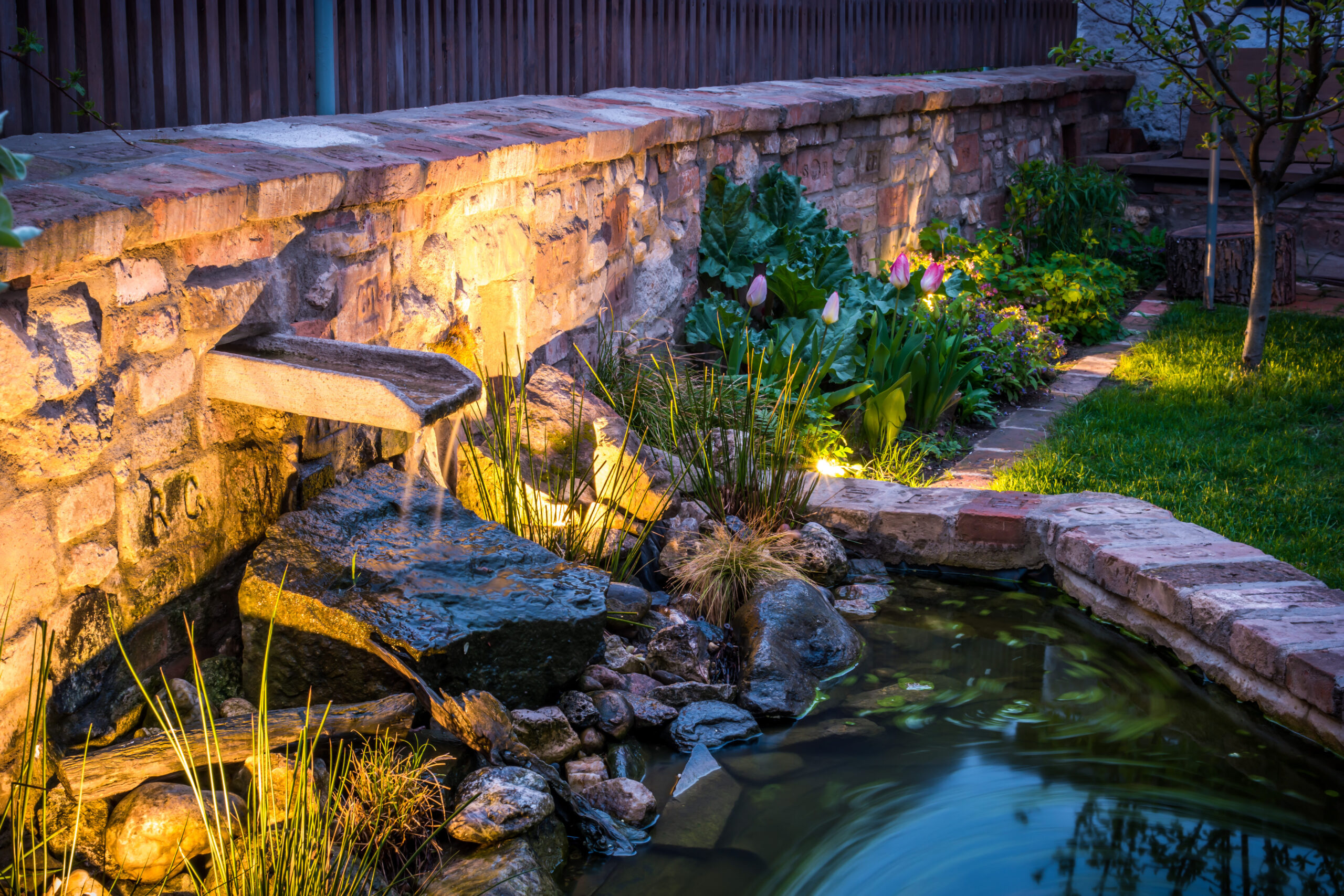
Why Floodlights Are a Game-Changer for Landscape Design
Floodlights do more than light up your yard – they create a visual experience. These powerful fixtures cast wide beams of light, ideal for highlighting architectural details, showcasing large trees, or adding bold contrast that makes your landscape stand out. According to the American Society of Landscape Architects, well-executed landscape lighting benefits can increase a home’s perceived value by up to 20%. With floodlights, you’re not just lighting your yard; you’re investing in its beauty and functionality.
At Tru-Scapes, we specialize in low-voltage LED lighting systems that deliver dramatic results while maintaining energy efficiency. Our floodlights are designed to blend seamlessly into your landscape, offering long-lasting performance and eye-catching visuals. Let’s dive into how you can make the most of these fixtures.
Choosing the Right Floodlights for Your Landscape
Not all floodlights are the same. To achieve dramatic results, it’s important to choose fixtures that align with your design goals and outdoor conditions.
- Brightness (Lumens): For bold lighting, use floodlights with 700–1,300 lumens to cover large surfaces like trees or walls. Smaller features may only require 200–400 lumens.
- Beam Angle: Wide beams (60–120°) are ideal for washing broad surfaces with light. Narrow beams (10–30°) work well for spotlighting specific features like statues or trunks.
- Color Temperature: Warm white (2700K–3000K) gives off a cozy, welcoming glow. Cool white tones (4000K–5000K) create a crisp, modern feel.
- Durability: Choose weather-resistant materials such as brass or aluminum – especially for regions with heavy rain or cold winters.
Tru-Scapes’ LED floodlights, for instance, feature adjustable beam angles and warm white tones, making them a versatile choice for a range of landscape designs. They’re built to endure the elements and offer long-term value.
Comparison Table: Floodlight Features for Dramatic Effects
| Feature | Best for Dramatic Effect | Alternative Option |
|---|---|---|
| Brightness | 700–1,300 lumens (trees, walls) | 200–400 lumens (shrubs, small features) |
| Beam Angle | Wide (60–120°) for broad coverage | Narrow (10–30°) for focused highlights |
| Color Temperature | Warm white (2700K–3000K) for cozy ambiance | Cool white (4000K–5000K) for modern look |
| Material | Brass or aluminum for durability | Stainless steel for budget-friendly option |
Pro Tip: Always test your floodlights at night before finalizing their placement. A slight angle adjustment can make a world of difference.
Strategic Placement for Maximum Drama
Placement is everything when it comes to dramatic landscape lighting. Floodlights are versatile, but their impact depends on where and how you position them. Here are some proven techniques, backed by professional lighting standards, to deliver major wow factor:
- Uplighting: Position floodlights at the base of a tree or column, aiming upward to emphasize height and texture. For example, uplighting techniques on a mature oak can make its branches appear as if they’re reaching for the stars.
- Wall Washing: Place wall-wash lights 6–12 feet from a wall to cast a soft, even glow across its surface. This highlights stonework or brick and adds depth to your home’s exterior.
- Silhouetting: Position floodlights behind a tree or sculpture, aiming toward a wall to create dramatic shadow play. This technique is perfect for uniquely shaped plants or statues.
- Pathway Illumination: Use floodlights with wide beams to softly illuminate walkways – enhancing safety without overwhelming the scene.
When I helped a client in Charlotte redesign their front yard, we used uplighting on their magnolia tree and wall washing on their brick façade. The result? Neighbors kept asking if they’d renovated their entire home – it was just the lighting!
Common Placement FAQs
How far should floodlights be from the feature they’re lighting?
For uplighting trees, place floodlights 2–4 feet from the trunk. For wall washing, 6–12 feet is ideal, depending on wall height.
Can I mix floodlights with other lighting types?
Absolutely! Pair floodlights with path lights for a layered effect. Tru-Scapes’ systems make it easy to combine fixtures for a cohesive look.
How many floodlights do I need?
A medium-sized yard typically needs 3–5 floodlights for dramatic impact. Larger properties may require 7–10, depending on how many features you’re highlighting.
Designing with Contrast and Balance
Dramatic landscape lighting thrives on contrast – bright highlights set against deep shadows. Floodlights are perfect for creating this visual drama, but balance is crucial to avoid a harsh or cluttered look. Here’s how to master it:
- Highlight Focal Points: Choose 1–3 key features (like a tree, fountain, or entryway) to illuminate with floodlights. Too many lit areas can overwhelm the eye.
- Embrace Shadows: Not everything needs lighting. Shadows add depth and intrigue, helping your lit features stand out more.
- Layer Your Lighting: Combine floodlights with softer fixtures – such as Tru-Scapes’ path lights – to guide the viewer’s eye through your landscape naturally.
Think of your yard like a theater stage: floodlights act as spotlights for the stars, while other lights set the scene. For example, a client in Atlanta wanted their pergola to be the centerpiece of their backyard. We used floodlights to highlight the structure and layered softer lighting to accent surrounding plants – creating a balanced, dramatic effect.
Energy Efficiency and Maintenance Tips
Floodlights don’t have to mean high energy bills. LED floodlights – like those from Tru-Scapes – use up to 80% less energy than traditional halogen bulbs, while delivering the same brightness. Here’s how to keep your system efficient and low-maintenance, following energy-saving outdoor lighting best practices:
- Choose Low-Voltage Systems: Low-voltage LED floodlights (12V) are safer and more energy-efficient lighting than high-voltage options.
- Clean Lenses Regularly: Dust and debris can reduce brightness. Wipe lenses with a soft cloth every 6 months.
- Check Wiring Annually: Make sure all connections are secure to prevent flickering or outages – especially after storms.
By investing in quality fixtures and following proper LED light maintenance, you’ll enjoy dramatic lighting that’s both cost-effective and long-lasting.
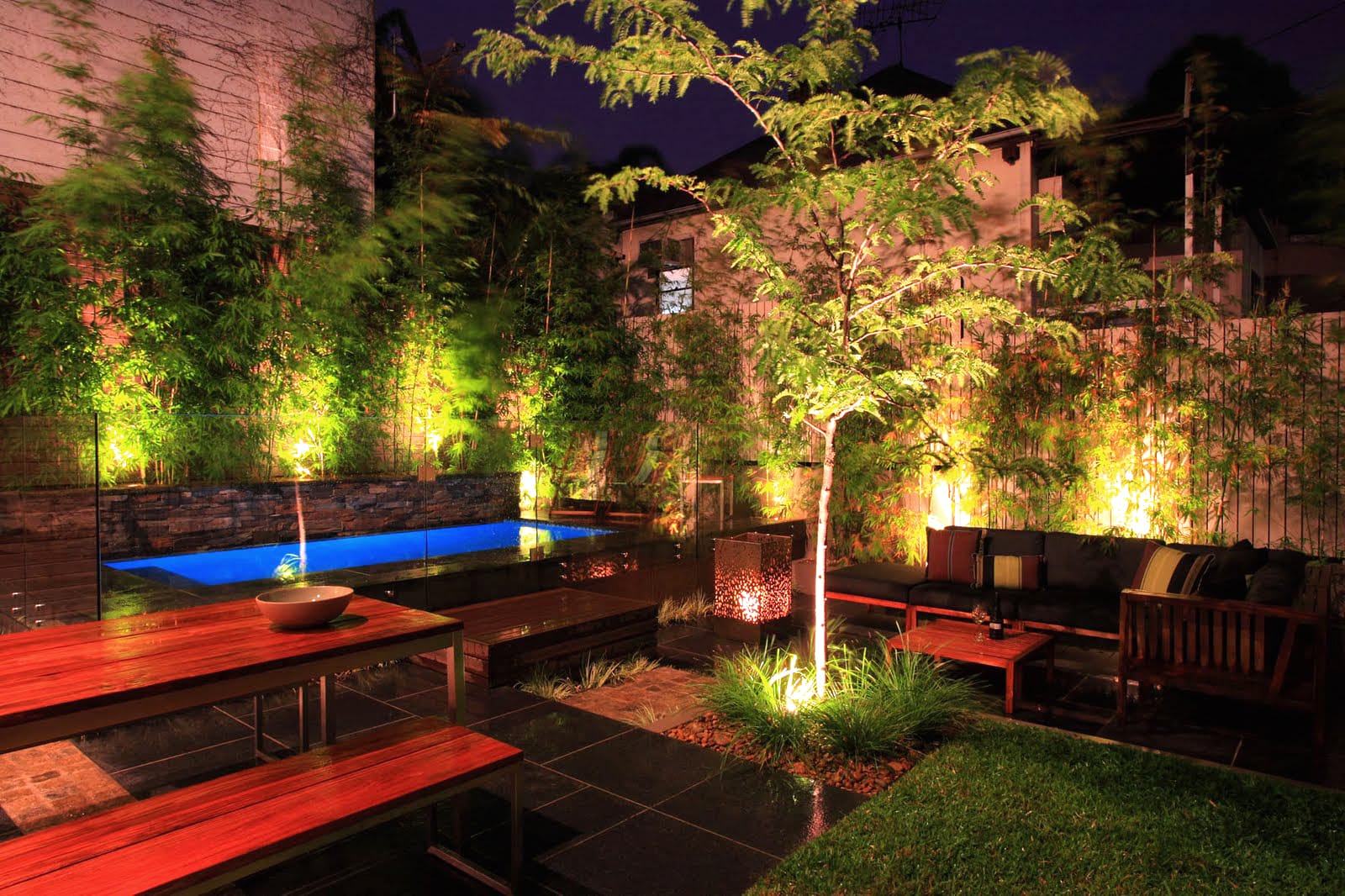
Bringing It All Together
Floodlights are your ticket to creating a landscape that stops people in their tracks. With the right fixtures, thoughtful placement, and balanced lighting, you can build a nighttime scene that’s both stunning and functional. Whether you’re highlighting a towering tree, accenting your home’s architecture, or setting a cozy backyard mood, Tru-Scapes’ LED floodlights help you achieve professional-grade results.
Ready to transform your outdoor space? Start by mapping out your focal points and experimenting with placement. Share your ideas in the comments – or reach out to Tru-Scapes for a consultation to bring your vision to life. Let’s light up your nights!

